There are many ways to propel ATVs and all similar off-road vehicles in the market today. The transmission type deployed by the manufacturer often points to the target audience they’ve got in mind with the product. What are the different types of ATV transmission, and how do they work?
ATV transmissions are mostly manual, semi-automatic, or automatic. Each of the transmission options can also have further variations. For example, some transmissions will shift from two-wheel to four-wheel drive or go from high to low gear, depending on the situation.
The rest of the article will look at the different types of ATV transmissions and how they work. Watch out for tips on how to choose an ATV with the best transmission for you.
In ATVs with a manual transmission, you have to choose the best gear for the situation. The lower gears are best selected for low traction scenarios, hauling heavy stuff, uphill climbs, and takeoff. The higher gears are best used when you’re cruising.
In a manual transmission setup, you have to disengage the engine from the transmission using the clutch stick before shifting between gears. Once the gear is locked in, you have to re-engage the engine by releasing the clutch.
So, in manual transmission, you have to control the clutch, the gear lever, and the throttle. If you’re on a hill, you may have to engage the brakes as well. The brakes here work like those on a motorcycle. The rear brake is operated by the right foot, while the front brake is controlled by your right hand.
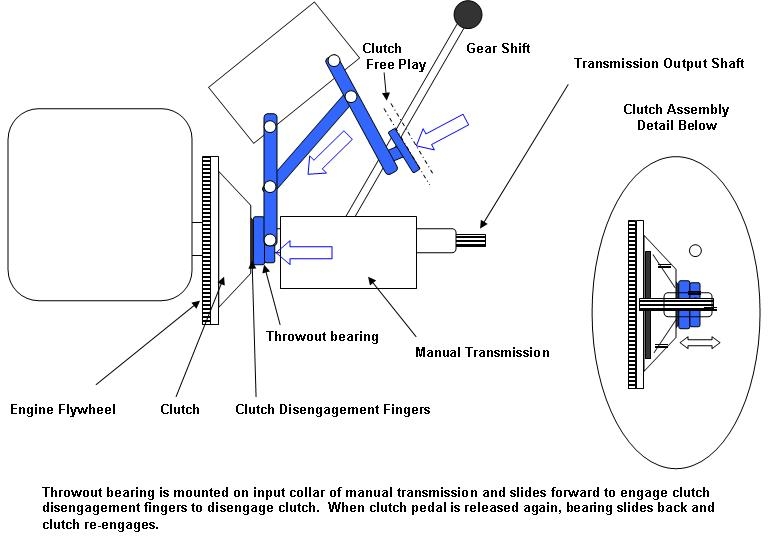
This type of transmission also makes getting into or out of turns easier. Transmission shifting as you’re about taking a sharp turn can upset the balance of the ATV.
Some people shy away from ATVs with manual transmissions based on the knowledge of how difficult it is to manage manual transmission on motorcycles.
However, ATVs are different because the four wheels of the ATV means you don’t have to worry about keeping it standing while managing the clutch and gear at the same time.
If you already have lots of experience with manual motorcycles and cars, operating an ATV with a manual transmission should be straight forward.
Here’s a video showing how a small engine manual transmission works:
ATVs with semi-auto transmissions are similar to those with a manual transmission, but the main difference is in the operation of the clutch.
You still have to choose the optimum gear for the scenario, but the clutch doesn’t have a separate lever. The act of shifting gears automatically controls the clutch as well.
With this setup, you’ll have one less thing to worry about while staying in control of the power generated by the engine. This type of transmission is also popular with sport ATVs.
It’s also deployed in vehicles made for inexperienced operators that are not yet experienced enough in gear selection but have a decent grasp of riding an ATV.
ATVs with automatic transmission are designed to handle gear selection for you, with the right gear chosen at the right time. This type of transmission is popular in utility ATVs, where the focus is more on the reason for riding the ATV, such as hauling, towing, or plowing.
Automatic transmissions in ATVs also work like what you get in cars, with some of them featuring levers that allow riders to shift between “hi” and “lo” gearing.
The system is based on centrifugal force. The foundation of the operation is based on the fact that the force moving away from the center of any spinning object will increase if the speed of rotation increases.
If the ATV is in “hi” gear, it will travel at speed much faster than normal, but it won’t generate enough power as it slows down. In “lo” gear, the max speed of the ATV reduces, but the amount of power generated at a lower speed increases greatly. In this scenario, you can haul or tow a lot more weight.
When discussing automatic ATV transmission, there are two main distinctions you’ll come across: CVT and wet clutch technologies.
Continuously Variable Transmission (CVT) is a transmission mode you’ll find in many adult ATVs. The design’s focus is to keep the engine within the best possible rpm range at all times. Once the engine is within this range, it will work more efficiently and produce the maximum power necessary for a given scenario.
ATVs with the CVT technology allow you to focus on maintaining stability and traction when on treacherous terrains or engaging in heavy-duty hauling or towing. You don’t have to worry about selecting the right gear for the situation.
The CVT mechanism contains two pulleys held together by a V belt. The two pulleys act as built-in clutches that control and vary the drive ratio between the output and input shaft in a controlled, smooth and continuous manner.
With further increase in speed, the belt will ride higher inside the main clutch, leading to an increased gear ratio between the output and input shaft.
The secondary clutch in the system works similarly to the main clutch, but its main role is to ensure there is no slack within the V belt, especially while the main clutch opens and closes.
The secondary clutch’s other role is to connect to the output shaft and the rear wheels, usually through a drive shaft or a chain.
Here’s a cool video showing how a CVT transmission works:
The wet clutch approach to automatic transmission is less convoluted than the CVT technology. It is mostly deployed in four-wheelers made for new riders of teenagers.
The system incorporates one wet clutch, which is linked to the engine via a range of gears. The transmission is only engaged at specific preset RPMs.
Models with this technology only have a single speed and the option of reverse. There’s only one forward gear. This design means you can’t rely on ATV models with this transmission for heavy-duty use or navigating rough terrains.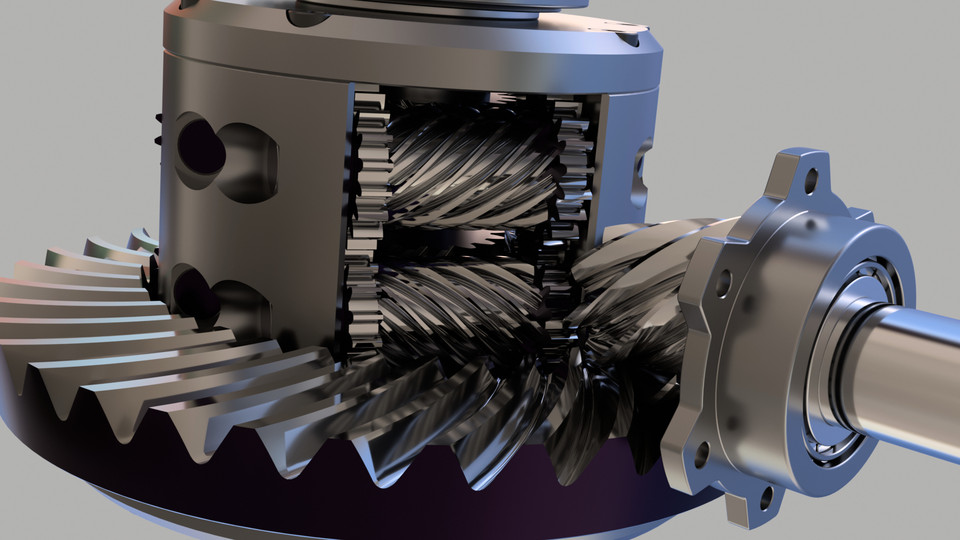
They are best for new riders that are still learning how to control and handle an ATV without worrying about shifting gears.
We’ve seen how each of the transmissions you’ll find in an ATV work. To choose the right option for you, pay attention to how you intend to use the machine.
If you’re getting an ATV for leisurely adventure on the beach and some mild competitive sport, one with automatic transmission will work just fine for you.
However, if your ATV will double as a recreational and utility vehicle, you should seriously consider going for one with a manual transmission. If you must go with automatic transmission, it should be a powerful CVT variant that can handle everything you intend to throw at it.
If you’re in the market for an ATV that can help your teenagers learn how to ride, a model with a wet clutch is a good idea.
The various models of ATVs in the market come with transmission technologies tailored with specific audience segments in mind. With what you’ve learned thus far, you should be able to instinctively determine what type of transmission to go with any time you need a new ATV.
With what you’ve learned thus far, you should be able to instinctively determine what type of transmission to go with any time you need a new ATV.
Experienced riders with the need for an ATV that can serve different (and often demanding purposes) will almost always choose a manual transmission. In contrast, casual or leisurely riders can get by with some types of automatic transmission.
Sharing is caring!
Lowest prices ever! Limited quantities! Order now and save!
Call for your Military, Student or Senior Discount on any order! Learn more >
Need help? Support is just a step away! Start a SUPPORT TICKET for assistance.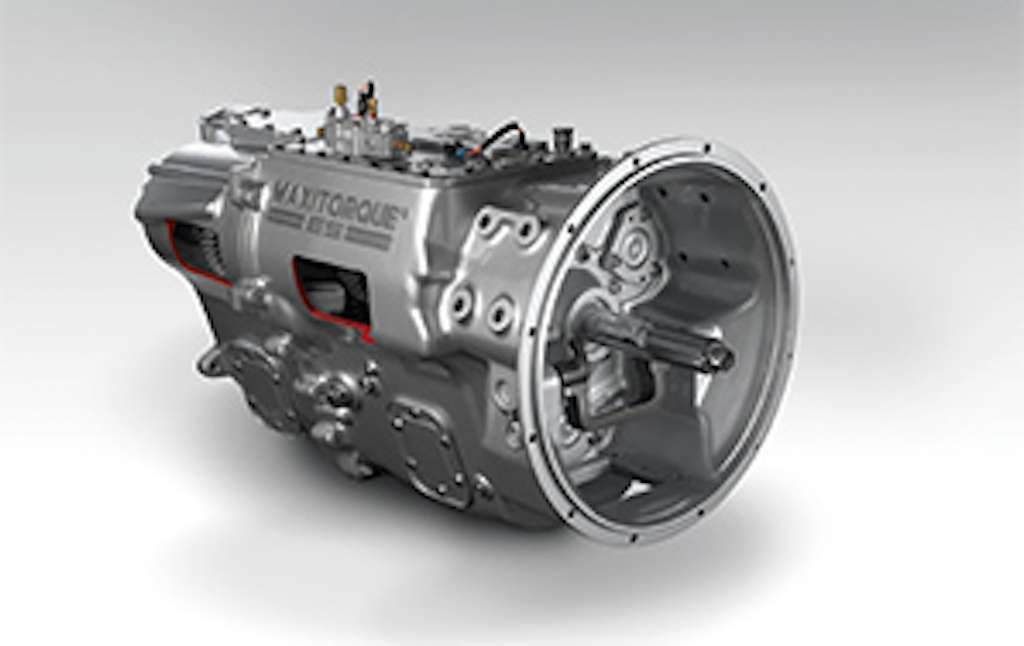
Financing Available! Check your rate in seconds without leaving our site.
By Jeff Backer October 12, 2016
There are three main types of transmissions that can be found within ATVs today.
The first is the manual transmission. The manual transmission requires the operator to select the most appropriate gear for the desired situation. The lower gears are used for take-off, steep climbs, hauling heavy loads and low traction scenarios; whereas the higher gears are most desired for cruising scenarios. The manual transmission also requires the operator to disengage the engine from the transmission via the clutch lever before each shift and re-engaging them through the release of the clutch after each shift.
The next type of transmission is the semi-automatic transmission.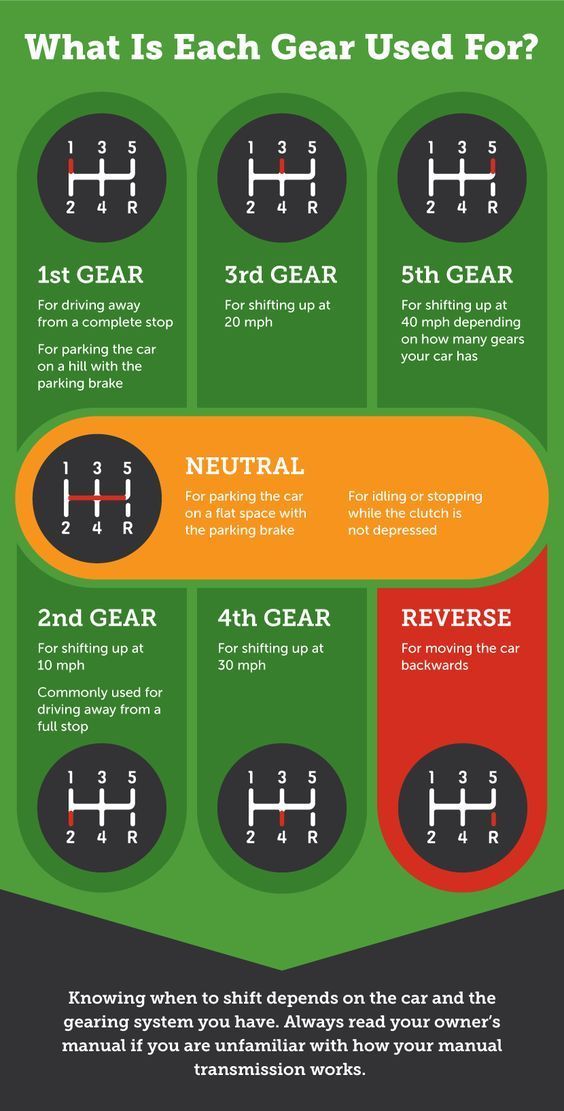 This transmission is very similar to the manual transmission in that the operator still selects the optimum gear for the situation they are in. But they are dissimilar in that the clutch is not operated by a separate lever, but rather through the act of shifting gears. This setup frees the operator to concentrate on controlling the ATV without having to worry about clutch operation. This setup is recommended usually found within sporty utility ATVs and in transition vehicles for children who are just learning the art of gear selection, but already have experience operating an ATV.
This transmission is very similar to the manual transmission in that the operator still selects the optimum gear for the situation they are in. But they are dissimilar in that the clutch is not operated by a separate lever, but rather through the act of shifting gears. This setup frees the operator to concentrate on controlling the ATV without having to worry about clutch operation. This setup is recommended usually found within sporty utility ATVs and in transition vehicles for children who are just learning the art of gear selection, but already have experience operating an ATV.
Within the ATV world there are two main types of automatic transmissions used; both remove the need for the operator to shift gears which allows for greater concentration on balance, direction and traction.
The first is the Continuously Variable Transmission better known as the CVT. The CVT is generally found in adult ATVs and works to keep the engine in its optimal rpm range.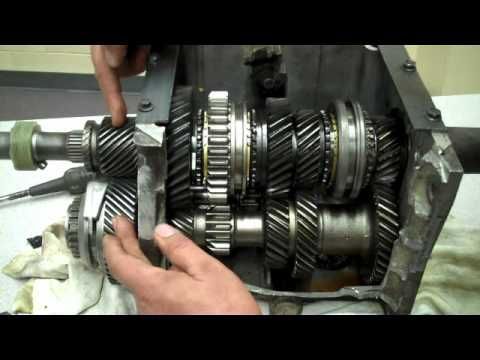 In this range the engine operates at its most efficient and produces its maximum power. The CVT also allows the operator to focus more on maintaining traction and stability in extreme conditions, and to not worry about whether they are in the correct gear for their situation. CVT's consist of two pulleys connected by a "V" shaped belt. The two pulleys act as clutches that continuously vary the drive ratio between the input shaft and the output shaft in a smooth and controlled manner. The primary clutch is connected to the engine via the input shaft and is completely disengaged from the belt at idle. As the engine speed increases, the primary clutch overcomes the spring force holding the two halves of the clutch (called clutch sheaves) apart. As the engine speed increases, the belt rides higher within the primary clutch, increasing the gear ratio between the input shaft and the output shaft. The secondary clutch works in a similar manner, although as the belt rides higher within the primary clutch, the belt is forced down, closer to the center of the secondary clutch.
In this range the engine operates at its most efficient and produces its maximum power. The CVT also allows the operator to focus more on maintaining traction and stability in extreme conditions, and to not worry about whether they are in the correct gear for their situation. CVT's consist of two pulleys connected by a "V" shaped belt. The two pulleys act as clutches that continuously vary the drive ratio between the input shaft and the output shaft in a smooth and controlled manner. The primary clutch is connected to the engine via the input shaft and is completely disengaged from the belt at idle. As the engine speed increases, the primary clutch overcomes the spring force holding the two halves of the clutch (called clutch sheaves) apart. As the engine speed increases, the belt rides higher within the primary clutch, increasing the gear ratio between the input shaft and the output shaft. The secondary clutch works in a similar manner, although as the belt rides higher within the primary clutch, the belt is forced down, closer to the center of the secondary clutch.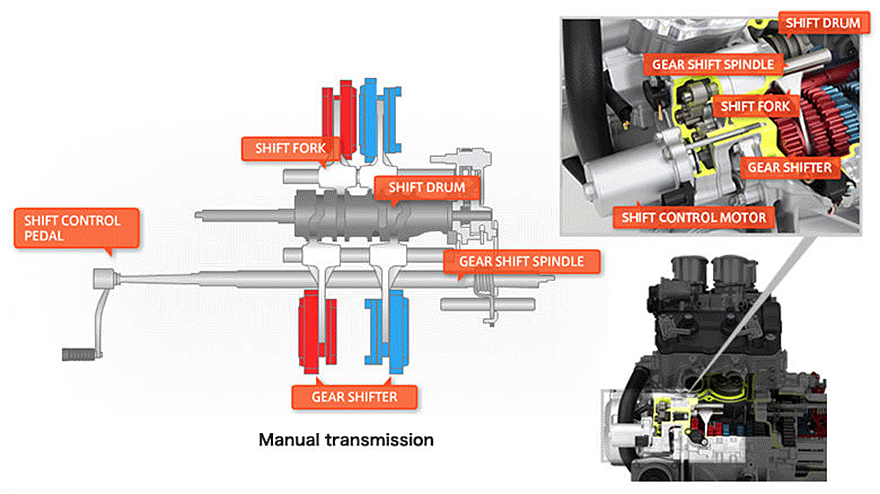 Its main job is to remove slack from within the belt as the primary clutch opens and closes. The secondary clutch connects to the output shaft and to the rear wheels via a chain or a drive shaft.
Its main job is to remove slack from within the belt as the primary clutch opens and closes. The secondary clutch connects to the output shaft and to the rear wheels via a chain or a drive shaft.
The other popular type of automatic transmission found within four-wheelers is much simpler and i'ts most commonly used in youth four-wheelers. This system uses a single wet clutch connected to the engine through a series of gears and engages the transmission at a certain preset RPM. The transmission on these models is a single speed with the option of reverse, but only a single forward gear. This design allows for beginning riders to concentrate on learning the handling and control of the ATV without having to worry about shifting gears.
Gears are transmission modes that allow you to adapt your ATV to different tasks and road conditions. Shifting increases traction or top speed.
Shifting increases traction or top speed.
In this article, we will tell you how to shift gears on ATVs with different types of transmission in order not to break anything and confidently overcome any routes.
The CVT transmission is the most popular 4WD utility ATV.
The variator consists of two pulleys. A belt is stretched between them, which rotates along a larger or smaller radius as the engine speed changes. This ensures a smooth change in gear ratio. In fact, the same thing happens as when moving the gears in a manual transmission.
How the variator worksThe variator is combined with the gearbox. The shift lever can be in five different positions:
L - downshift;
H - overdrive;
N - neutral;
P - parking lock;
R - reverse.
Downshifting allows the ATV to climb steep slopes, off-road, or haul loads more easily and without damage to the CVT. In overdrive, the technique can develop maximum speed. It is recommended to use it for driving faster than 10 km/h.
In overdrive, the technique can develop maximum speed. It is recommended to use it for driving faster than 10 km/h.
There is no conventional clutch on an ATV with a CVT. Instead, a centrifugal automatic. Therefore, before each shift, be sure to come to a complete stop, apply the brakes and reduce the engine speed to idle.
To stop, just remove your finger from the throttle trigger - the ATV will quickly slow down and stay even in the H or L position until the driver again increases the engine speed.
For a long stop, it is better to switch to neutral. To prevent the equipment from rolling away, you can put a hand brake or gear P.
A manual transmission is usually used on small displacement rear-wheel drive ATVs. Structurally, it is similar to the transmission of a high-speed bicycle, only instead of sprockets there are gears. They are connected in different combinations depending on the selected gear.
Structurally, it is similar to the transmission of a high-speed bicycle, only instead of sprockets there are gears. They are connected in different combinations depending on the selected gear.
In order not to break anything when shifting gears, there is a clutch. This mechanism decouples the transmission from the engine and allows the gears to engage without load. To control the clutch there is a separate lever on the steering wheel.
On an ATV with a manual transmission, the gears are shifted by a lever located at the left footrest. How exactly depends on the specific model. Popular options:
N is a neutral gear, in which the vehicle will not go anywhere. R is reverse.
This is how the design of the ATV manual transmission looks like
What is the difficulty. It can be difficult for a beginner to move off. If you release the clutch too quickly or add insufficient rpm, the engine will stall. If you give too much gas and drop the clutch, the vehicle will move with a jerk and may even jump out from under the rider.
What to do. At first, you can try to move off without gas at all - just release the clutch smoothly and slowly. This will help you feel the moment when the ATV is ready to go and you need to increase the engine speed.
What is the difficulty. At first it is not obvious when to switch.
What to do. You can focus on the sensations. If vibration is felt, the ATV twitches and accelerates sluggishly, you need to switch down, and if the engine “roars”, up. Another option is to look at the speedometer. Each gear has its own optimal speed range. Here are the average values:
Each gear has its own optimal speed range. Here are the average values:
On the manual transmission, the gears are shifted with a foot lever. Depress the clutch before every shift.
On the CVT transmission, the gears are shifted by hand using a lever located on the side of the driver. Before each shift, we completely stop the equipment and hold the brake.
The main task of an ATV gearbox is to transfer torque from the engine to the wheels as accurately as possible. The second important task of the transmission is to adjust the number of revolutions of the wheel by increasing the gear ratio.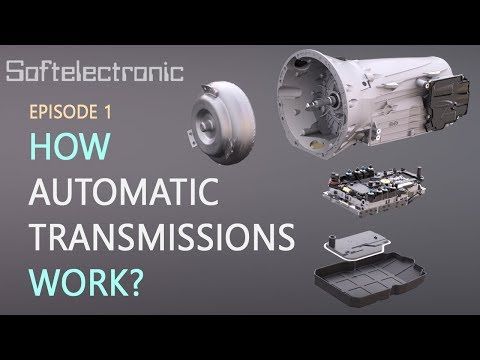
That is, the faster you want to move, the higher you have to shift into gear. In the case of an automatic-type gearbox on an ATV, you still have to change gears, in particular, engage in reverse or choose between 2D or 4D drive. In low-cost models, including those made in China, the equipment is equipped with an automatic transmission, but more expensive sports ATVs are equipped with a fully manual transmission.
Contents
The mechanics are identical to the standard motorcycle and allow the driver to more accurately feel the moment of shifting gears at the optimum pace. As a result, such sports ATVs have better power and maneuverability. And when you're on the track, the power can be reduced by adjusting the gearing. And finally, the last advantage of a mechanical sports transmission is the ability to enter corners more comfortably. But try not to change gear directly during the turn, in which case you will lose balance. The 150cc gearbox is usually made as simple as possible, so you can not hope for excellent sensitivity and smoothness. The main advantages of mechanics on an ATV can be considered:
But try not to change gear directly during the turn, in which case you will lose balance. The 150cc gearbox is usually made as simple as possible, so you can not hope for excellent sensitivity and smoothness. The main advantages of mechanics on an ATV can be considered:
Also, shifting gears on a similar gearbox is much easier than on a motorcycle, because such a technique has 4 wheels, which means that all the emphasis can be placed on gear shifting control. The movement on the mechanics is carried out similarly to other vehicles in the manual transmission, only when driving to a hill, you will have to simultaneously hold the clutch and brake.
Therefore, if you choose a model for the most dynamic and confident operation, pay attention to the type of transmission, mechanics will be the best choice.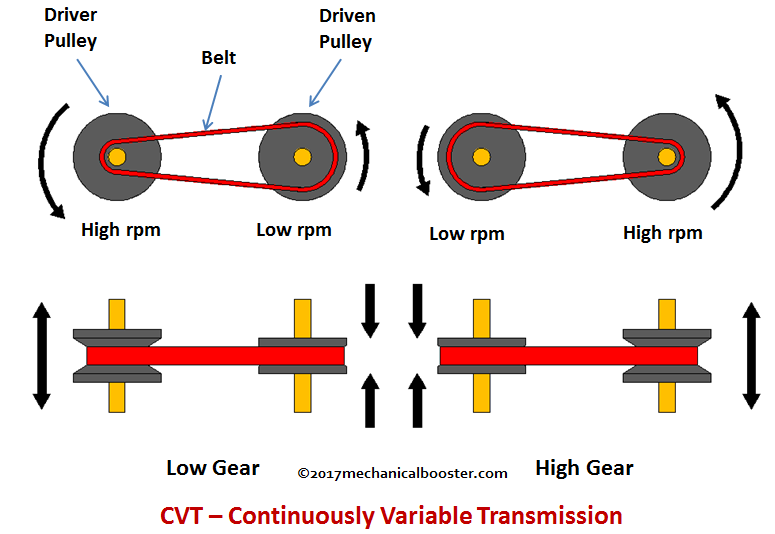
Whereas manual ATVs are more for real racers and power lovers, the automatic transmission is more relaxed. The principle of its operation is similar to a car, where your task is only to shift gears. Automatic transmissions are most common on utility vehicles, the main feature being the choice between high and low gears. If you want to go fast, you will have to turn on high speed, but the disadvantage will be weak power. Conversely, at high power, the box will limit top speed. Buying an automatic shift ATV gearbox is recommended for kids or beginner riders who want to get comfortable and get used to the movement.
Let's give an example of the operation of a mechanical box, because it may differ in operation from other equipment. The main component is the gearbox, its power is transmitted from the second shaft with the variator pulley to the third shaft - the intermediate one. It is he who allows the box to continue working, transferring force to the last 4 shaft with the wheel mounted on it.